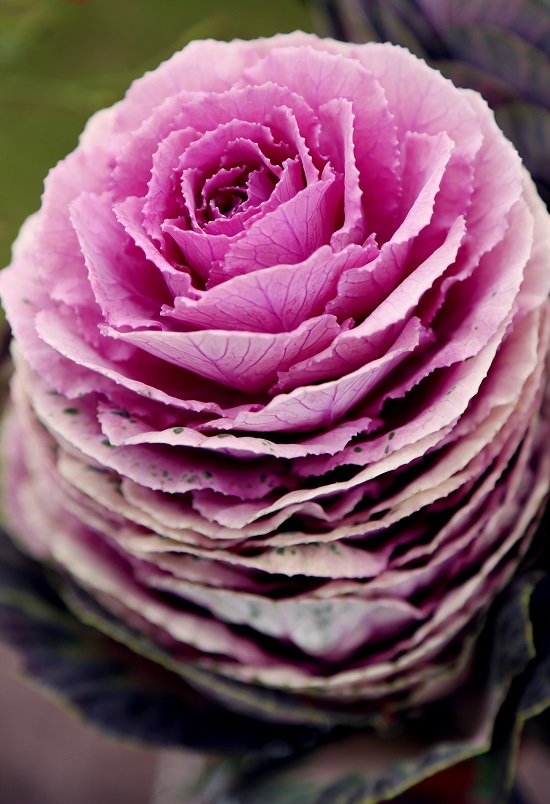
Photo By: Life in Chandigarh
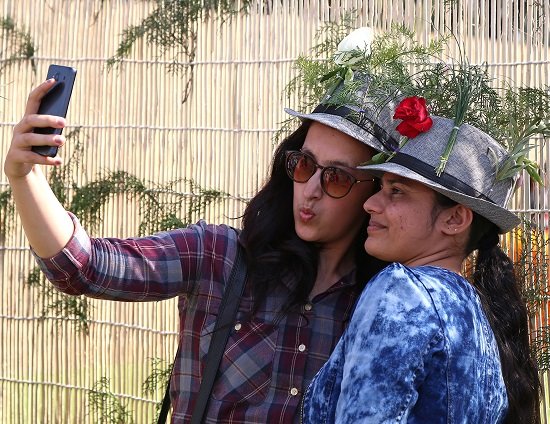
.jpg)
.jpg)
.jpg)
.jpg)

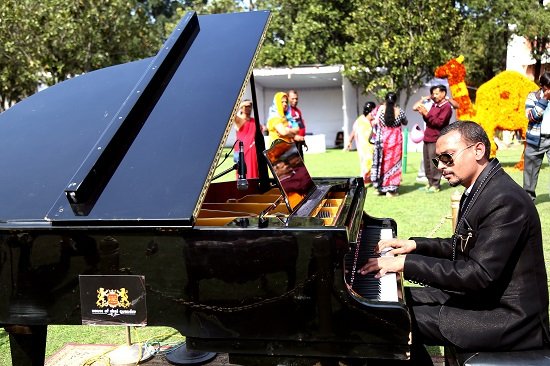
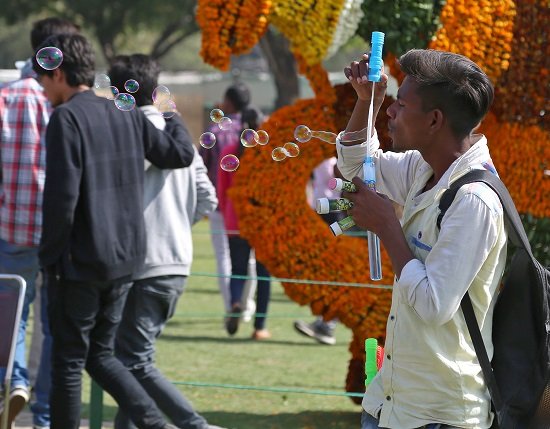


.jpg)
.jpg)
.jpg)
.jpg)



Helicopter rides were the star attraction of the 45th Chandigarh Rose Festival
rn

rn
rn

rn
rn
.jpg)
rn
rn
.jpg)
rn
rn
.jpg)
rn
rn
.jpg)
rn
rn

rn
rn

rn
rn

rn
Acclaimed kathak dancer Nandita Puri walks us through Shringaar, her artistic abode and initiative to encourage art and culture in the city.
How do you introduce someone who needs no introduction? Well, it’s a dilemma journalists face very often. So, we leave the formalities and let our subject, the beautiful and talented dancer Nandita Puri take over. Bo to a renowned classical singer in the city, Primila Puri, Nandita Puri is a well-known face in the television industry. But as she admits so herself, she has treated acting (she was a part of many Hindi daily soaps) as her second profession, and it will always come after her first love, kathak.
.jpg)
What is Shringaar?
Puri teaches kathak at Shringaar in Sector 16 which is a beautifully crafted location; a treasure house of sorts inviting you to loosen up and explore the treasure which lies within you. Walk into her place of work, which is rightly calls her place of worship, and you tend to forget everything and automatically flow into the realm of tranquillity. Set up along with her husband Dan Dhanoa, Puri has transformed a part of the place, which is originally her mother’s house, into one serene beauty. With dance lessons taking place in the studio facing a beautiful garden, which can accommodate 180 people, it steers clear from the traffic and other disturbances. It never feels like the place is in the heart of a city. Her husband, a former actor who works in the merchant navy, is also an art collector and has been a key contributor here. “When he first came here, he got excited after seeing all the empty walls,” quips Nandita.
.jpg)
Together, they organise exhibitions, hold workshops to revive the dying art culture in the city. Over the last three years, the two have organised eight workshops. They have also been magnanimous in opening this abode to other artistes and have experts take yoga classes at the venue in the mornings.
.jpg)
But what came as a disappointment to Puri was that most people wanted to lea Bollywood style of dance. Despite that, she kept teaching kathak and now, after two-and-a-half years, she has 14 students who train under her. “I feel I am doing my bit in a sort of effort to keep the classical traditions alive” says Nandita. “Here, they lea only classical. Sometimes we do folk to ease them off the discipline, but no Bollywood,” she adds.
.jpg)
Next on the cards for Nandita is a purely classical ballet with the concept of healing with music. While it will take her sometime to bring it Chandigarh as it will first be showcased in Mumbai, she is working on another surprise element for the city. It is going to be a workshop, which she’s busy planning for. It will bring in fitness, dance and enjoyment together. “We are going to start with slow music and yoga and moves on to Sufi dance, folk dance and classical dance. This is for those people who don’t have the time to come and lea classical but still want to lea dance,” she tells us. We can’t wait to enrol.
The former President of the Chandigarh Golf Club died in harness. Again, only one to do so
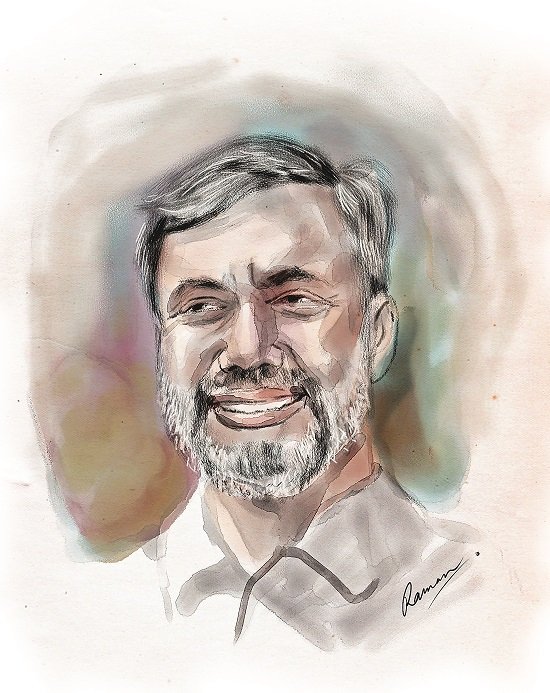
rn
Period paintings tell author William Dalrymple that even in what history considers its gloomiest years, the Mughal court was rich in colour
In 1670, Delhi was the centre of the richest, most powerful empire of the world, which made Ming’s China look impoverished. There was extraordinary colour in the Mughal court in what history considers the” dark” 100 years leading up to 1857. “Riches that were produced in this country, sophistication that will never be rivalled,” author-historian William Dalrymple said at Panjab University during his Urmi Kessar memorial lecture on ‘Princes and Painters in Late Mughal Delhi, 1707-1857’. “People call Donald Trump a real-estate Mughal, but even he doesn’t have the taste.”
.jpg)
Dalrymple referred to the Mughal artistic culture in the 18th and 19th centuries and highlighted the interwoven nature of Mughal, European and regional patronage to Delhi’s court artists such as Nidha Mal, Chitraman, Ghulam Ali Khan, Ghulam Murtaza Khan, and Mazhar Ali Khan.
He referred to the contributions of William Fraser, Scottish officer who married an Indian woman from Hansi in Haryana, and he referred to the portraits of soldiers, villagers, dancing women, holy men, Indian nobles, and British ‘nabobs’. The 150 years leading to the mutiny were a transitional period that altered Indian culture, politics and art, and ushered artistic innovation and experimentation.
.jpg)
Aurangzeb had never banned painting but also never patronised it. After him, Bhadur Shah-I and Farukh Siyar didn’t take much interest in it either, triggering the flight of culture and arts to Rajasthan. It was not until Mohammad Shah Rangeela that Delhi regained its status as the centre of arts. He brought folk music to the Mughal court and liked to dress up as woman.
Portraits show a naked emperor moving undetected through Jauhari Bazar in intricate body paint and celebrating Hindu festivals in court, scenes that Dalrymple says would have made Aurangzeb turn in his grave. It was like the return of culture to London with Charles the Second after 40 years of no art, stage, colour, or festivities.
.jpg)
History shows Delhi on the verge of collapse at this time but pictures tell a different tale. Paintings reveal Rangeela’s fondness for women, flowers, and sport (elephant fights). A time of good food and great paintings. Unfortunately, it coincided with the time of a savage invader called Nadir Shah.
When historians discuss the legacy of British colonialism in India, they usually mention democracy, the rule of law, railways, tea and cricket. Yet the idea of the joint-stock company is arguably one of Britain’s most important exports to India. The East India Company remains history’s most terrifying warning about the potential for the abuse of corporate power.
.jpg)
“There are more Mughal artefacts stacked in this private house in the Welsh countryside than are on display at even the National Museum in Delhi. The treasure includes a painting that shows the time in August 1765 when the young, blind Mughal emperor, Shah Alam, exiled from Delhi and defeated by East India Company, was forced to dismiss his own revenue officials in Bengal, Bihar and Orissa, and replace them with a set of English traders appointed by Robert Clive–the new governor of Bengal,” Dalrymple said.
In another painting, Sir Thomas Roe, the ambassador sent by James-I to the Mughal court in 1614, is shown appearing before emperor Jahangir, who had inherited from his father, Akbar, lands stretching through most of India, all of what is now Pakistan and Bangladesh, and most of Afghanistan. He ruled over five times the population commanded by the Ottomans – roughly 10 crore people. His capitals were the megacities of their day.
.jpg)
From 1803 to 1830, Brits mixed with local artists, commissioned stuff. Then came Charles Metcalfe, who was smug and never seen in Indian clothes. The British and Indian cultures parted ways in the 1830s. The Last Mughal Emperor controls only the Red Fort but is a great patron of arts.
Let's resolve to not only follow traffic rules diligently but also become proactive traffic volunteers who don't shy away from helping where possible
Who am I? I am a responsible and public spirited Indian citizen, and I am concerned about the lack of road sense among most of us and the resultant chaotic conditions. That the traffic police force in the entire Chandigarh and Tricity has proved woefully inadequate in reining in the habitual and determined violators, is not lost on us. So, can we as citizens do something about it, with some help from the authorities? Of course, we can, provided we shed our inhibitions and hesitancy and resolve this New Year that we will contribute our bit.

So far I have been making my little contribution in instilling road sense among road users wherever convenient, and possible, as a self motivated traffic volunteer. My efforts have remained confined to ensuring that motorists stop at traffic lights and behind the zebra crossing when I am walking to and from some place, making people realise that it is in their own interests to park their vehicles properly in designated slots like in market places, requesting people to go back when they are trying to take a short cut by moving against the flow of traffic and stepping down to help liquidate small traffic jams.
But with traffic on Tricity roads increasing massively, leading to frequent, almost daily traffic snarls, and the limited traffic police force being overstretched, there is an urgent need for evolving an offbeat ‘traffic volunteers program’ which unleashes the power of scores, if not hundreds of traffic volunteers on the Tricity roads. These volunteers can go about doing their job while on the move without upsetting their daily schedules and also utilise their free time to do some traffic management near or around their own homes.
During my interactions on the issue with friends and others from time to time I have felt good to know that many people were disturbed over general lack of traffic sense and discipline and would love to contribute their bit without making a fuss over the issue, and without adversely affecting their daily work schedules. They may not want to get bogged down in an official system, so to say, but selflessly go about their work as per their own calling, for their own satisfaction at having done some constructive work for the overall good of society.
While one acknowledges that the Chandigarh Traffic Police Wing must be having many traffic marshals and volunteers working with it, and they must be doing good work, but most often one sees them on some official occasions like observance of traffic week etc. The need is for scores of ‘trained and self motivated volunteers’ with some kind of official recognition and authority to be unleashed on the roads, constantly keeping a watchful eye on the moving traffic, and intervening, wherever possible, with the authority of the state and seeking quick assistance from dedicated backup teams of traffic police personnel.
Such a volunteer force can be raised by a concerted effort through social media with the backing of the state with a name like ‘Volunteers in Action (VIA)’ or so. Only volunteers with a deep commitment to the cause and ready to work hands on selflessly are shortlisted, trained, given an official sanction like an ID card and a prominent arm band and then their force unleashed on the roads. This would be volunteerism in the true sense of the word.
The Volunteers can help in checking:
rn
rn
rn
rn
rn
rn
rn
They can also educate:
rn
rn
Debit your stress over no cash in hand by opting for easy and alternate ways of making financial transactions
Not too long ago, the queues around banks and ATMs in the tricity were daunting, to say the least. These are definitely new times for majority of Indians who are in the habit of transacting with cash only. And while the resilience and patience of law-abiding citizens was put to the test, it required some out of the box thinking on their part as well. Prime Minister Narendra Modi has reiterated in his statements since the demonetisation move that Indians need to embrace the digital cashless world and “digitisation of economic activities is here to stay”.
While thankfully there was no panic situation in Chandigarh and its suburbs, it’s time all of us opted for (and learnt) alternative ways to make financial transactions. The team at Life in Chandigarh has compiled a list of ways you can make your payments and purchases without having cash in hand (but in the bank, of course).
Write a cheque, please
This is one of the easiest ways to make a payment. While one is used to cutting a cheque for large amount of payments, that mindset needs to change. Given that it is the safest way to make a payment to someone, it’s surprising that most of us are shy to use it. It not only makes sure the money goes into the person’s account, it also helps you keep check of payments.
.jpg)
Online Banking
For those who have shied away from using the Internet to transact online, they need to gear up now. The excuse that “I am not Internet-savvy” just doesn’t work anymore. Just like most of us have embraced new technology on our phones, it’s time we did the same for banking online.
For starters, you will have to register for the service at your bank branch. All private and public banks are happy to facilitate the same given the thrust on cashless society by the government. After you register for net banking option, you will be given a starter kit with a customer ID and password. It is imperative that you change the password from time to time and make sure you bank online from a secure server and computer free from malware. Get youngsters at home or people who have online banking experience to help you through initially.
Once you are familiar with net banking, you can do a multitude of things – view your account balances, pay bills, open fixed deposits, recurring deposits et al. You can also make a funds transfer to your friends.
Mobile as a wallet
Within the first 24 hours of the announcement of demonetisation, the wallet loads of Snapdeal-owned mobile transactions platform Freecharge grew 12 times and has been increasing by the same average since then. Some of the major m-wallet players are Airtel Money, mRupee, Vodafone m-Pesa, Oxigen Wallet, Paytm, Mobikwik and Idea Money. These wallets actually play the part of a physical wallet. You can not only make bill payments but much more. They are easy to download and are accessible on App stores and many Apps come in regional languages as well. All you need is a basic smartphone and internet connection.
Swipe and be wise
A recent report stated that there were around 75 crore debit and credit cards in the country (Source: RBI) and almost 72 crore of these are debit cards. With an increasing number of stores and vendors now keeping Point of Sale (PoS) machine, it’s time to pull out your debit/credit card from the cupboard and use them card diligently. Never share your pin numbers and passwords with anyone.
Single Platform
Unified Payments Interface (UPI) is a system that powers multiple bank accounts (of participating banks), several banking services features like fund transfer (P2P), and merchant payments in a single mobile application. UPI was launched by National Payments Corporation of India with Reserve Bank of India’s (RBI) vision of migrating towards a ‘less-cash’ and more digital society. UPI has built on the Immediate Payment Service (IMPS) platform. It can be used for immediate money transfer through mobile device round the clock 24x and 365 days. Single mobile application is used for accessing different bank accounts. Other features include bill sharing with friends, merchant payment with single application or in-App payments, utility bill payments, over the counter payments and more.
One can download the UPI application from the App Store/Banks website and create profile by entering details like name, virtual id (payment address), password etc. (with inputs from IANS and online banking portals).
The change of season has brought with it refreshing menu changes across restaurants in the city
The nip in the air is hard to miss and with the dipping mercury signalling a change in season, restaurants around town have taken cue to rework their menus. But more than just a toss-up of season specific dishes, the new menus have been well thought out keeping in mind the palate of diners in the city.
Multiple Spread at Baluchi: It’s one of our favourite restaurants in the city when it comes to Indian cuisine. Moving away from the predictable Mughlai and north Indian (predominantly Punjabi) fare, Baluchi housed in The Lalit Chandigarh offers a good mix of popular dishes culled from across the country. The new menu, curated by their team of chefs, is indeed plump and it traverses through south Indian, Bengali, coastal and Awadhi fare. The jeera ananas aab is a drink that’s super refreshing and the cumin flavour stays with you for long, in a good way. Given how the weather is changing, the malabari shorba made from cocount milk is warm and filling. There’s a robust range of starters like mutton galauti (expect melt in the mouth flavours), tandoori tusli masala artichoke, malai broccoli and the likes. The main course is equally appetising – the chicken stew with appam is a perfect way to enjoy a new flavour. Dal Baluchi retains its smokiness the Vendaka masala pachadi is worth a try, though the Patrani macchi needed a bit more time in the steamer for our liking. The perfect accompaniment to the menu is the selection of breads from their signature naanery. We are big fans of the gilaafi naan and the paan kulfi. A meal for two will cost Rs 2,000.
.jpg)
Midnight Meals at JW Marriott: There’s been a spurt in the number of eateries offering midnight food deliveries. But when you are out with friends and family on a weekend and looking to grab a bite in the middle of night, the options for a safe and hygienic place are almost zilch. Looking to fill the gap, Cafe@JW housed in JW Marriott Chandigarh has rolled out a special midnight menu. A look at the cutely styled carts in the dining area with hot tawas, stacks of eggs, pots bubbling with chai and you realise the focus is on familiar and comfort food. On offer are popular combinations like bread-omelette, keema-pav, Maggi noodles, curd and paranthas and more. Streetside favourites made by gourmet chefs in nice ambience are the USPs here and pocket-friendly prices. A meal for two will cost Rs 1,200.
.jpg)
Popular favourites at Taj Chandigarh: Maintaining a balance between local palate and the preferences of outstation guests including international travellers can be tricky. It’s here that the new menu at Cafe 17 housed in Taj Chandigarh scores well. There’s everything from Amritsari chole kulche and puri, poha and paranthas, dosas and idlis to waffles and pancakes, Danish pastries, French rolls et al. The soup and salad section has been revamped totally. We like the use of ingredients like quinoa, asparagus and cherry tomatoes in the sandwiches. Since it’s an all-day diner, there are new additions to the main course meals like Sufiana paneer tikka, Charmula chicken brochettes, Andhra tawa fish and loaded nachos. A meal for two will cost Rs 2,000.
Aggarwal Sabha's appeal to its community in the city to hold budget weddings is indeed appreciable. But will simple and low-key weddings trend in the future?
It seems to have got the Aggarwal community thinking. Just a few days ago the executive committee of the Aggarwal Sabha in Chandigarh unanimously passed a resolution that the members of the Aggarwal community should spend less on marriages. Weddings should be inexpensive and less ostentatious affairs, appealed the Sabha. A suggestion has also been made by the committee that marriage functions should be held during the day time to avoid extra expenses. While the Sabha denies that demonetisation has had a role to play in their recent announcement, it is a much appreciated move.
.jpg)
Speaking about the appeal to its community, Sunil Gupta, general secretary, Aggarwal Sabha, Chandigarh said, “Marriage functions should be simple. We suggest that even guests and relatives should not be given anything in form of ‘shagun’. In the meeting of office bearers of our executive, a decision has also been taken that Aggarwal families should hold simple ‘Rasam Pagri’ functions.” The Akhil Bhartiya Agrawal Sammelan, a national body, had also issued similar directives which the Chandigarh unit has taken forward.
According to rough estimates, Indian families (middle class to upper middle class) spend anywhere between Rs 20 lakhs to Rs 6 crores for weddings and associated functions. Recently, social media was abuzz with news over preparations for Union minister Nitin Gadkari’s daughter’s wedding. Reports suggested over 10,000 guests, most of them VVIPs, were flown to Nagpur in 50 charter flights. Terming the wedding as extravagant, the Congress party had questioned the extravagance in times of demonetisation and also sought bank details be made public. Also this month, former minister G Janardhana Reddy recreated the Vijayanagara empire at Bangalore Palace for his daughter’s wedding which was spread over five days and saw expenses over Rs 500 crore.
“People have started using weddings as occasions to flaunt wealth and status,” feels Neha Aggarwal, a city-based entrepreneur. Married to a doctor, Neha’s own wedding was spread over three days but her parents made sure the guest list didn’t run into thousands. “Times are changing and so are communities. Increasingly, we are becoming conscious of how we spend and are making wise decisions with our money,” said the mother of two who hails the Sabha’s appeal to tone down marriages.
.jpg)
Equally appreciative of the move is Sunil Aggarwal, owner of Patyala – Royal couture, a popular designer clothing store in Sector 22, Chandigarh. “What most people forget is that the wedding is just for one day. Just like everyone forgets the previous day’s news, it’s the same for weddings. I feel the directive is a good move and personally, I feel there should be no wastage in weddings,” said Aggarwal.
It is a widely known fact that in olden times, the community elders would maintain an account of money spent on a boy’s education and bringing up (a bahi khata of sorts) that was presented to the girl’s side with the aim of being reimbursed.
Reflecting on the Aggarwal Sabha’s appeal, Dr M S Malik, president of the Jat Mahasabha in Chandigarh said, “It is a good move but we have been saying the same for a long time as well. It is not a result of demonetisation. All communities in general should avoid spending such large sums on weddings. Where is the need to show off?”
Some years ago, the Delhi Sikh Gurdwara Management Committee (DSGMC) had also tried to discipline the community by issuing an advisory against serving of non-vegetarian food and alcohol at Sikh weddings. The DSGMC had also issued an order asking Sikhs in Delhi to keep their weddings simple instead of hosting elaborate functions. While the move met with mixed reactions, big fat Punjabi weddings didn’t show signs of toning down. It is hoped that the Aggarwal Sabha’s appeal doesn’t go in vain. It would be nice to see simple wedding affairs where the bride and groom mingle among a close set of guests who are treated to limited albeit delicious menu. Can we expect ‘simple and nice’, ‘low-key but fun’ headlines to trend when it comes to weddings in 2017? We sincerely hope to.
Mame Khan keeps the legacy of Mangniyar folk music alive
"After more than 5,000 concerts at nearly 3,000 venues in more than 50 countries, the times I performed with my father, Rana Khan, remain closest to my heart"…..
From sand dunes to international fame. Sufi singer Mame Khan, who performed on the opening night of Royal Rajasthan Festival at Elante’s café courtyard, remembers the day that turned his life.
(3).jpg)
“A scout heard me singing in the wedding choir of musician-actor Ila Arun’s daughter and recommended me to Shankar-ji (singer and music director Shankar Mahadevan), and my Bollywood career stated off with the song ‘Baaware’ from the movie ‘Luck by Chance’,” he says. “Call it luck, but it was the result of my ‘riyaaz’ (years of music practice).”
The man who gave his voice to more than 500 songs, including film numbers for ‘No One Killed Jessica’ and ‘Mirzya’, and darling-of-the-masses ‘Chaudhary’ in Coke Studio Season 2 on MTV, belongs to a family of master singers from Rajasthan that preserves a unique tradition. He doesn’t remember the age at which he first sang but he has been travelling and performing in since 12.
“My first performance,” he says, “was before the-then prime minister, Rajiv Gandhi.” After more than 5,000 concerts at nearly 3,000 venues in more than 50 countries (across Europe, North America, the Gulf, and Africa) the times he performed with his father, Rana Khan, remain his most cherished. “It was a dream came true to share the stage with him and travel together.”
Rana Khan taught him the nuances of Mangniyar folk music, including ‘Jangra’. Mame Khan carries forward the family legacy of leading a simple life, singing at festivals and for the ‘jajmaan’ (patrons) at weddings and childbirth.
He has emerged as one of the country’s most admired Sufi singers, for his range of traditional, folk, and devotional songs. In 15 years, his family revived the once dying art of Indian Sufi singing, and Mame Khan has set his heart on taking it to new heights.
(4).jpg)
Mame Khan, who blends Sufi and traditional Rajasthani music, regaled the audience with ‘Mast Qalandar’, ‘Chhap Tilak’, ‘Jugni’, ‘Baaware’, and, of course, ‘Chaudhary’ on the opening night of Royal Rajasthan Festival.
“We need stronger cultural ties to build a stronger India,” UT administrator VP Singh Badnore observed at the inauguration. If it needs a brand ambassador, there’s Mame Khan.
The Mangniyars
The Mangniyar are Muslim classical folk musicians in Sindh (Pakistan) and the bordering Thar desert of Rajasthan’s Barmer and Jaisalmer districts. Wealthy landlords and aristocrats have patronised them for generations. The Mangniyar consider themselves descendants of the Rajputs, whose songs are passed on from generation to generation as oral history of the desert. They sing about Alexander, local maharajas, and past battles in the region.